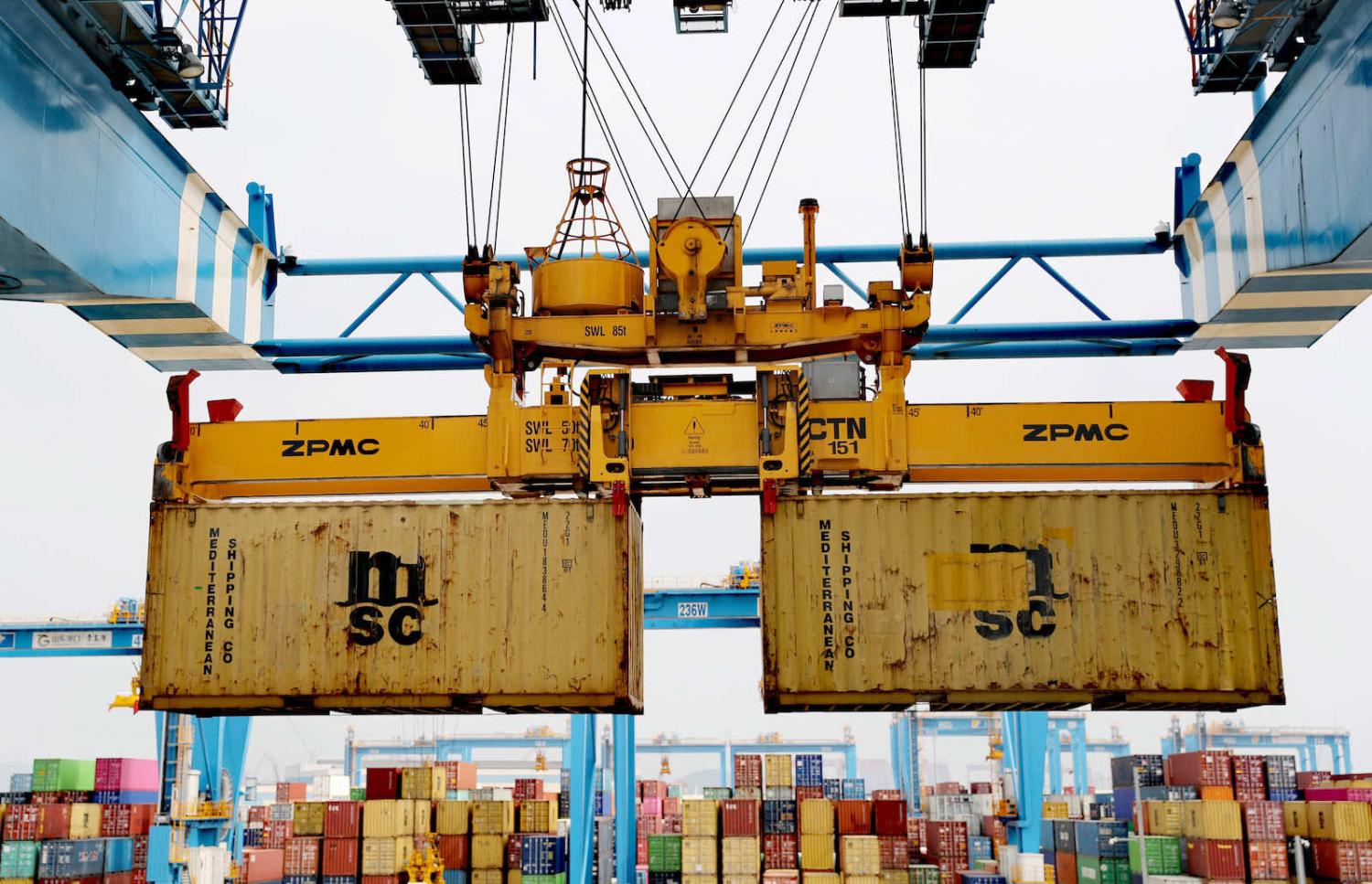When China applied earlier this month to join the Comprehensive and Progressive Agreement for Trans-Pacific Partnership, the renamed 11-nation trade pact spanning Asia and the Pacific, Beijing seemed to hand Australia the rare diplomatic gift of leverage.
Australia, like other existing members of the trade pact, has a right of veto over the accession of new members. And as one the agreement’s lead architects, Australia’s position on China’s accession has broader implications.
Frozen out of high-level dialogue with China for some time now and with little else to entice Beijing into resuming contact, Australia – at last – has something China wants.
The question for Australia, though, is how to best use this bargaining chip.
Trade Minister Dan Tehan has made clear that ministerial dialogue with China, not just on the CPTPP but also on bilateral issues, should resume as a pre-requisite to any moves to accession. He has also pointed out that a “track record of compliance” with existing trade rules would be needed and that “CPTPP parties would also want to be confident that an accession candidate would fully implement its commitments under the agreement in good faith”.
The missing piece, however, in the US approach to the region remains its economic engagement.
Implicit in these statements is that Australia intends to “spend” its newly-found leverage on getting China back to the negotiating table to make some progress on bilateral trade disputes such as wine and barley. While this is understandable, especially given domestic political pressures, Australia needs to be careful about how it approaches China’s CPTPP bid. As both Wendy Cutler and Naoise McDonagh compellingly argue, the internal reform burden that CPTPP accession and ongoing compliance would impose is frankly unimaginable given China’s current political economy and its trajectory.
And Beijing knows that the likes of Australia, Canada, and probably Japan are unlikely to look favourably on Chinese accession as things stand.
China’s bid, then, is really about international manoeuvring.
As other observers have noted, China’s motivations have more to do with blocking possible Taiwanese membership, driving a wedge between existing members, and claiming the rhetorical high-ground on multilateralism and trade liberalisation.
So, if actual Chinese membership is a pipe dream, and Beijing’s request is just a political move, then is Australia actually that well served by legitimising China’s bid by engaging in accession talks? After all, while a photo op with a Chinese minister might relieve some political pressure, there’s no guarantees that ministerial dialogue will be the silver bullet that ends China’s calculated economic coercion strategy towards Australia.
Indeed, playing along with China’s application just to extract some narrow bilateral aims carries significant risks for Australia, not least if the ultimate answer to Chinese membership is going to be a firm “no” anyway. Australia could suffer reputational damage to its free trade credentials for cynically using its CPTPP membership this way. Inviting China down the garden path of accession, only to say no would also expose Australia and other less resilient CPTPP members to the full gamut of Chinese statecraft as Beijing seeks to shoulder its way in.
There’d also be an opportunity cost for the CPTPP itself: every moment spent dealing with the complexities of an ultimately doomed Chinese bid is a moment not spent considering more viable candidates.
Australia’s best option, then, might simply be to ignore the illusory leverage of China’s request. The smart play for Australia and other CPTPP members now would be to require China to show in detail how it would comply with the agreement as a pre-condition to serious talks. In all likelihood, this would expose Beijing’s bid for the charade it probably is.
But there are other opportunities for Australia from this situation.
The more valuable leverage for Australia in China’s bid is actually with the United States. The momentum behind the Quad, the new AUKUS agreement, and the very positive reception last week for Prime Minister Scott Morrison in Washington reflect how seriously Australia is taken by the United States on Indo-Pacific security. The missing piece, however, in the US approach to the region remains its economic engagement, particularly in shaping trade and economic architecture.
If there’s one thing that can unite an otherwise deeply divided Congress, it’s the prospect of China gaining ground at America’s expense. Australia should grasp its moment of especially high regard in Washington and use the spectre of Chinese CPTPP membership to draw the United States further into the region’s economic rule-making.
While American membership of the CPTPP remains too politically toxic, Australia can be a trusted broker for the United States in finding creative ways to make Biden’s “trade policy for the middle class” work in the region.
Australia should offer more politically palatable options to the Biden administration. Carefully selected, sector-specific agreements – such as on digital trade – are a good start, avoiding direct threats to blue-collar jobs. More ambitiously, though, Australia could examine whether its existing trade architecture in Southeast Asia, such as the ASEAN-Australia-New Zealand FTA, could be adapted or built upon to accommodate the United States in some way.
While China’s sees its CPTPP bid as a smart tactical move, Australia can turn it on its head by making it the impetus for greater US economic influence in the region.

